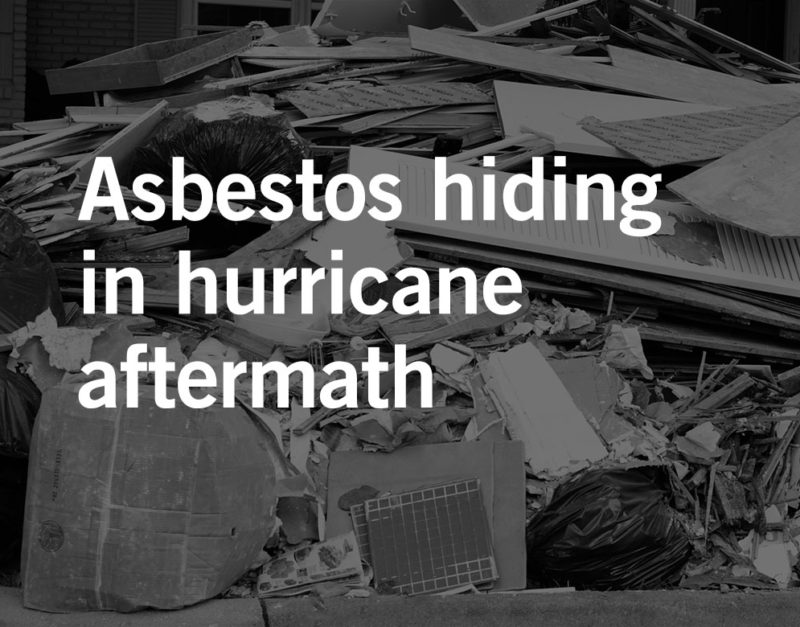 February 10, 2021
February 10, 2021 Hurricane readiness is a skill needed by an estimated 44.8% of the nation’s population. Each year, coastal states stretching from Maine to Texas are threatened by Atlantic Hurricanes that bring powerful winds, heavy rain, and often disastrous flooding. While Americans are generally prepared for the initial impact of a destructive storm, many are not aware of the imminent danger of asbestos exposure in the wake of damaged infrastructure.
What is Asbestos?
Throughout most of the 20th century, asbestos was a widely used fibrous mineral known for its insulating and fire-retardant properties. Today, countless industrial and construction products may still contain asbestos even though its use has been limited since the 1970s. When asbestos-containing materials are damaged due to a natural disaster like a hurricane, toxic asbestos fibers may become disturbed, then airborne, and later inhaled. The fine dust can form deposits in the lungs that cause serious and deadly illnesses like mesothelioma.
Unfortunately, these diseases have a long latency period and are almost always diagnosed in late stages of development. To help prevent asbestos exposure in the midst of city-wide destruction, it’s important to know what products among mass debris have the potential to contain the hazardous material. Common asbestos-containing products include:
- Paint
- Insulation
- Pipe covering
- Flooring tiles
- Ceiling materials
- Roofing products
How to Prevent Asbestos Exposure After a Hurricane
Adhering to federal guidelines enacted to protect public health is vital to ensuring that citizens are not unknowingly exposed to asbestos. The Environmental Protection Agency (EPA) states that “cleanup activities related to returning to homes and businesses after a disaster can pose significant health and environmental challenges,” which is why the agency’s recommendations should be observed.
Along the same lines, the Department of Labor’s Occupational Safety & Health Administration (OSHA) emphasizes that the most effective way to protect yourself from asbestos exposure after a hurricane is to wear safety equipment during cleanup and restoration efforts. This equipment can include a face mask, respirator, and other protective gear such as goggles, gloves, boots, and disposable coveralls.
When assessing a home or office building for potentially disturbed asbestos-containing products, individuals should set out to do the following:
- Wet down all materials they suspect contain the toxin. This will reduce the chances of asbestos fibers becoming airborne.
- Do not burn suspected asbestos-containing building products.
- Be aware that any effort to repair or remove asbestos products should be performed by a licensed abatement specialist.
How We Help Victims of Asbestos Exposure
Seek justice with the help of our experienced asbestos attorneys. Our asbestos law firm has represented individuals like you affected by asbestos exposure for over 20 years, aggressively fighting the corporate giants responsible for their dangerous products. If you or a loved one were exposed to asbestos or suffer from a disease caused by asbestos like mesothelioma, we can help.


